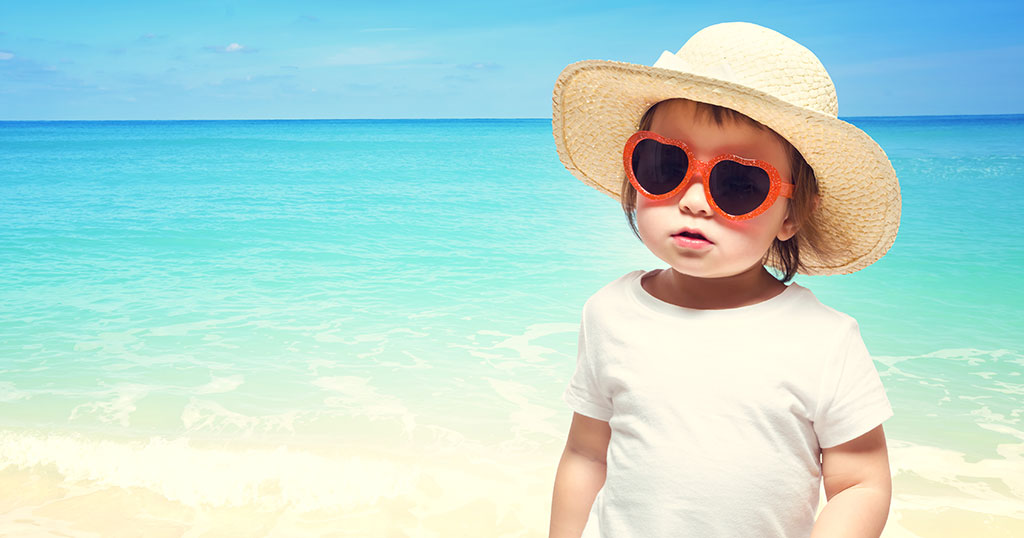
Importance of Sunglasses for children
Why is it important for children to wear sunglasses?
As children are in a dynamic active state of growth, it is estimated that 50% of total sun exposure occurs in the first 18 years of age, since children are more active outdoor during this age. Another important factor is the deletion of the ozone layer, a protective filter layer of atmosphere, leading to increased exposure to UV radiation which can negatively affect children’s skin and eyes.
UVA rays may cause harm to the central vision, causing damage to the macula, a central part of the retina at the back of the child’s eye. UVB may cause harm to the front part of the eye (cornea and lens), which absorb UVB rays. The other well-known side effects of UV radiation include: cataract (clouding of lens), macular degeneration, pterygium (benign growth on the white of the eye) and corneal sunburn which is painful and might cause temporary vision loss. Additionally, blue rays may cause digital eye strain due to the high energy light that is emitted by computer and mobile phone screens. Another important fact is that children’s eyes are more susceptible to the harm caused by excessive exposure to UV rays than adults because the young clear lens inside the eye is less capable of filtration of these harmful rays.
To put things in perspective, normal light is between 400 nm (on the blue end of the spectrum) to 760 nm (on the red side). However, the sun emits other electromagnetic waves in addition to light. The sun emits two types of ultraviolet rays (UV) radiation, UVA (ranges between 320-400 nm) and UVB (ranges between 290-320 nm). UVA accounts for about 95% of the UV radiation that reaches the skin and eyes. UVA rays are considered to be more harmful than UVB since they penetrate farther into skin and eyes than UVB. Also UVA rays penetrate glass while UVB rays do not. Both UV rays are reflected from sand, water and snow (80% of UVB rays reflect from snow).
In conclusion, it would be very wise for parents to ensure that their children wear protective tinted sunglasses outdoors, especially in snowfields, sandy beaches and near pools and sea. The color of sunglasses is not correlated with the level of UV protection, thus special tinted glasses with certification that will block up to 100% of the sun’s UV radiations is needed. However, before buying these sunglasses, it is advisable to arrange an eye examination with Paediatric Eye Doctor for a thorough eye examination and to provide a prescription for the glasses, if needed.